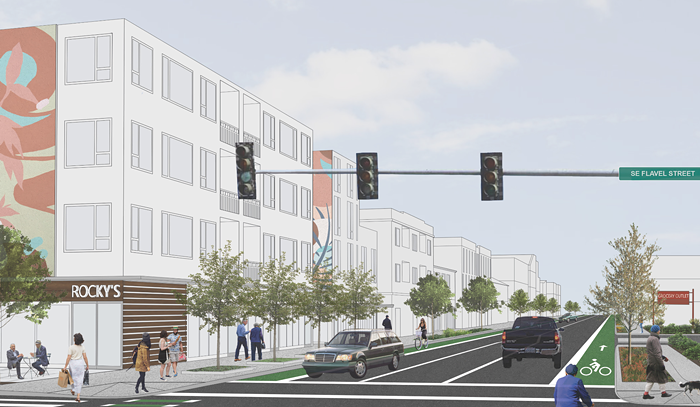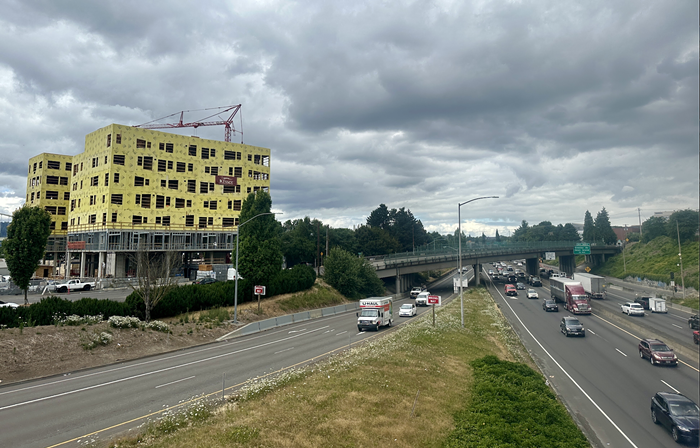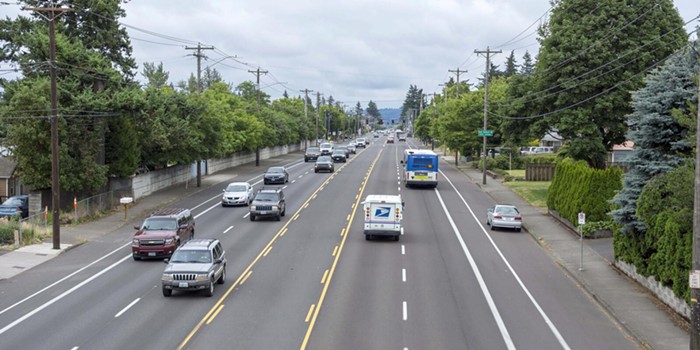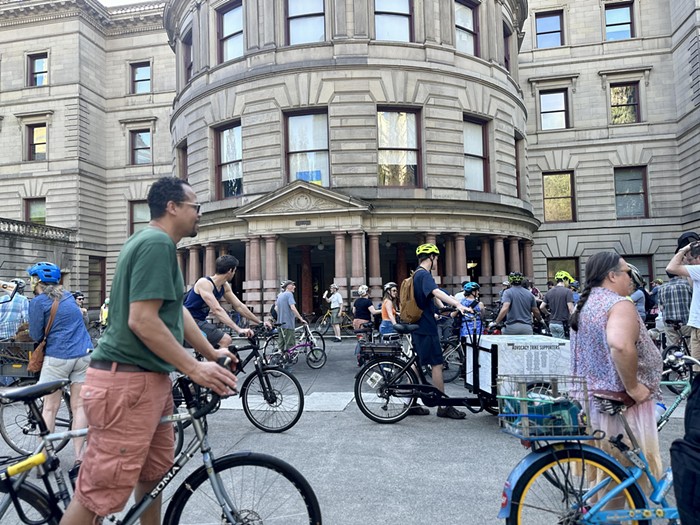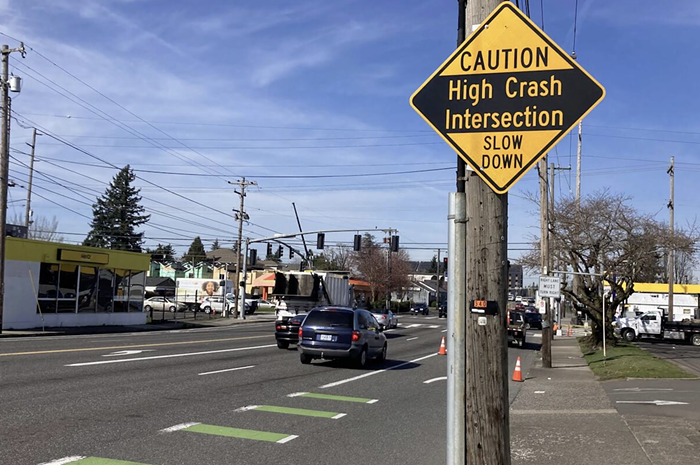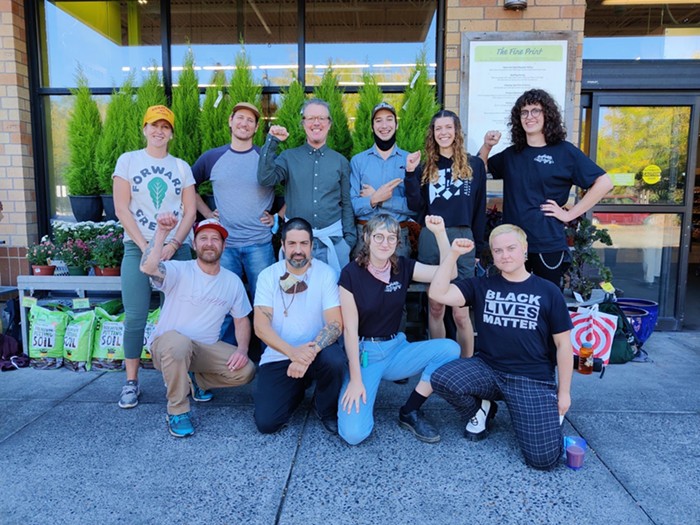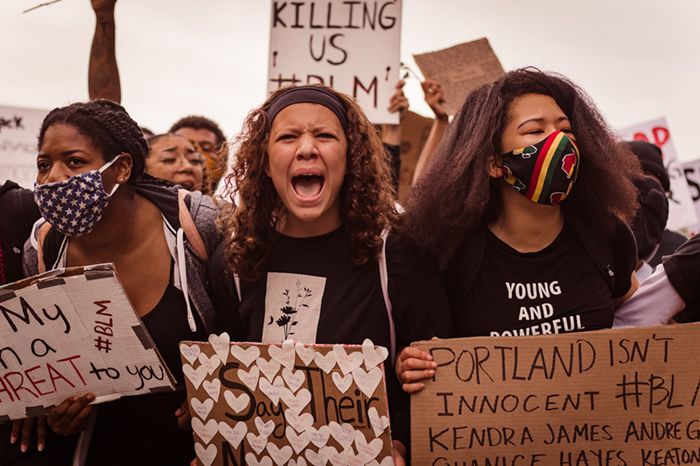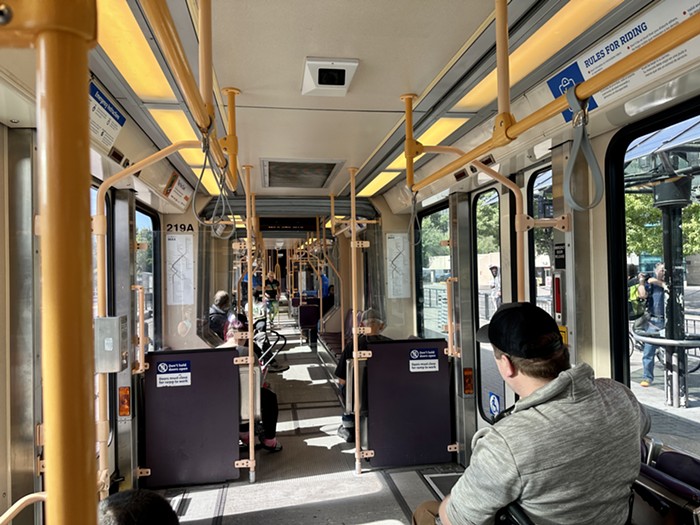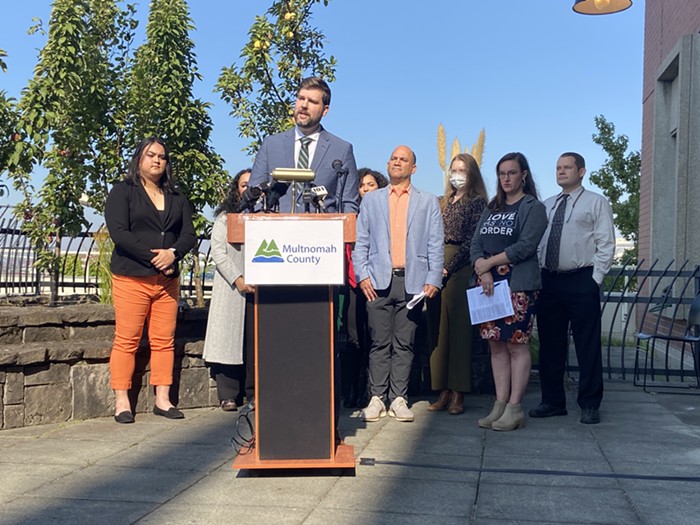Last night was Portland's fifth annual Transportation Safety Summit, where citizens and leaders got together in Lents to talk about why people keep getting hit by cars, crashing their cars, and crashing their cars into other cars on Portland's streets and what we can do about it.
The Good!

• We're safer now than any time since 1925. That's right! We had as few deaths on the roads in Portland as we had the year the first motor hotel opened.
• The city is investing more in sidewalks and bike facilities. It makes sense to invest in making the roads safer for the most vulnerable people on the road, right? Though state-level politicians refuse to raise the amount of the money spent on all bike/ped projects over a measly one percent of the state transportation budget, in Portland the transportation bureau is spending 18.6 percent of its capital budget on pedestrians and 10.7 percent on bikes (wonky chart). The city's plan is for 80 percent of residents all the way out to 162nd Ave to live within a half mile of a neighborhood greenway (like SE Clinton) by 2015.
• Stimulating sidewalks. Plans to invest $16 million in building sidewalks primarily in East Portland and Southwest got big applause last night. As they should.
•"Accident" is Banished. The mayor, the captain of the transportation division, and various bureaucrats all referred to "traffic crashes" instead of "accidents." Interesting semantic change. TriMet chief Neil McFarlane botched the perfect score though, but referring repeatedly to "accidents."
Below the cut: The bad and the WTF!
The Bad!
• Twenty six people died! Even though it's good compared to other years, 26 people dying completely preventable deaths on Portland's streets is 26 too many.
• Crashes occur on the same streets over and over. Certain streets in Portland are clearly dangerous by design. The city and state identified the 10 "High Crash Corridors" as: Sandy, 82nd Avenue, 122nd Avenue, Division Street, Powell Boulevard, Foster Road, Marine Drive, Burnside Street, Beaverton-Hillsdale Highway, and Barbur Boulevard. To get a better picture, here's maps of all the bike and pedestrian crashes over the past nine years. Click to make them bigger.
•Fixing dangerous streets is going to be difficult. The city and state are working on a plan to boost education and enforcement on those dangerous streets, but, let's be honest, tickets and shaming posters aren't going to revolutionize behavior. It's going to take engineering changes—that means bumped out curbs, more signals, better crosswalks—and that means money.
The WTF?
• Victim Blaming. Police traffic division captain Todd Wyatt seems like a pretty cool guy (he joked about the time he got a speeding ticket as "an opportunity to reflect") but when explaining traffic deaths, he pointing the finger at: drunk drivers, pedestrians who don't cross safely, and cyclists who don't wear helmets. For example, referring to Friday's terrible crash involving a woman who turned around to see why her dog was barking in the back seat and careened into a cyclist, critically injuring him, Wyatt said if the guy on the bike had been wearing a helmet, he'd be out of the hospital by now. Yes, it's safe to wear a helmet. But the problem is unsafe driving. Same thing with blaming pedestrians who wear dark clothing or think they're safe in a crosswalk—it's the responsibility of drivers to go slowly and safely enough to make sure they don't run over anyone who's using the road legally.
• Everyone got free ice cream. Seriously, what's a Portland transportation meeting without a cargo bike full of free local gelato?


